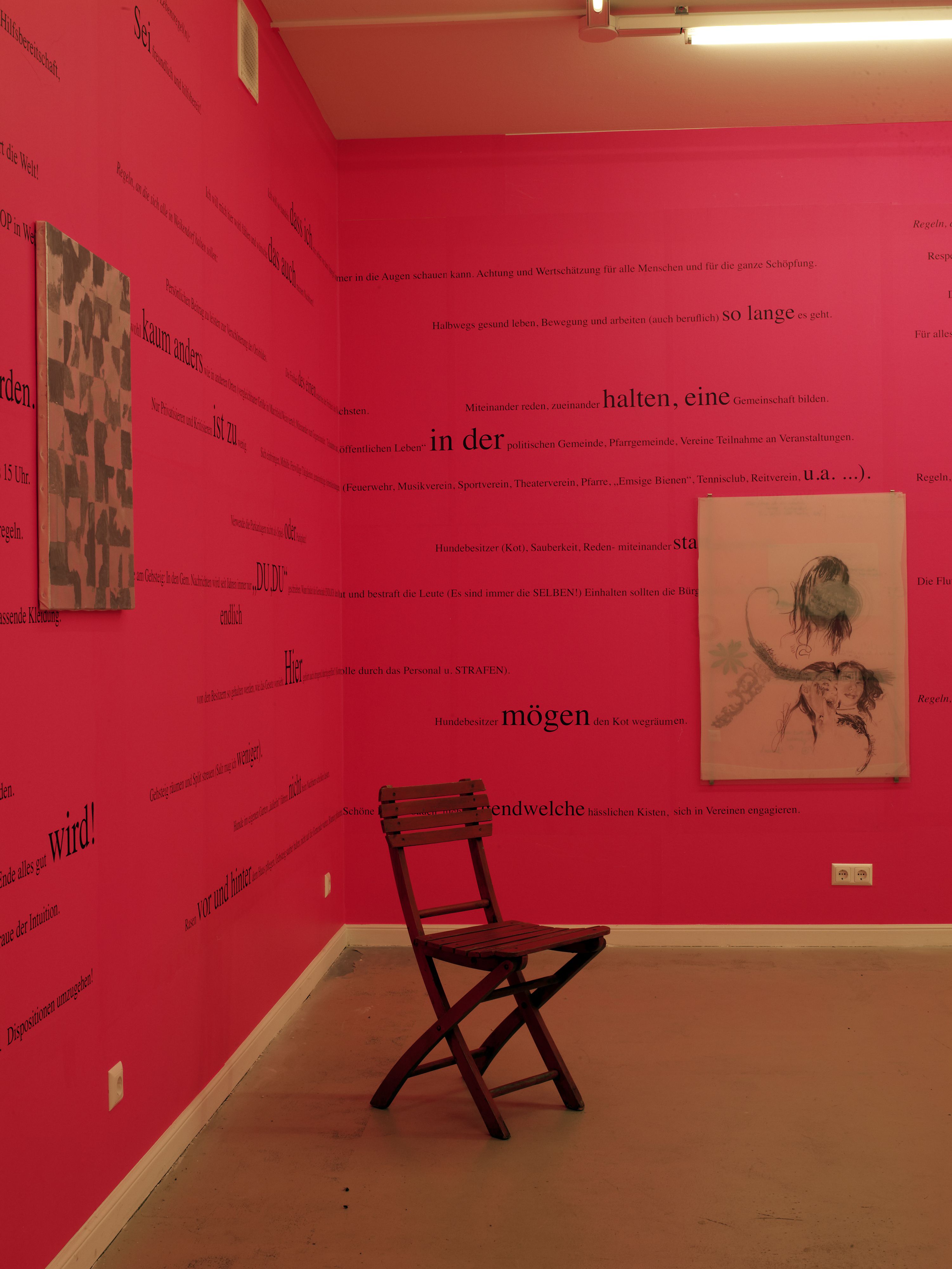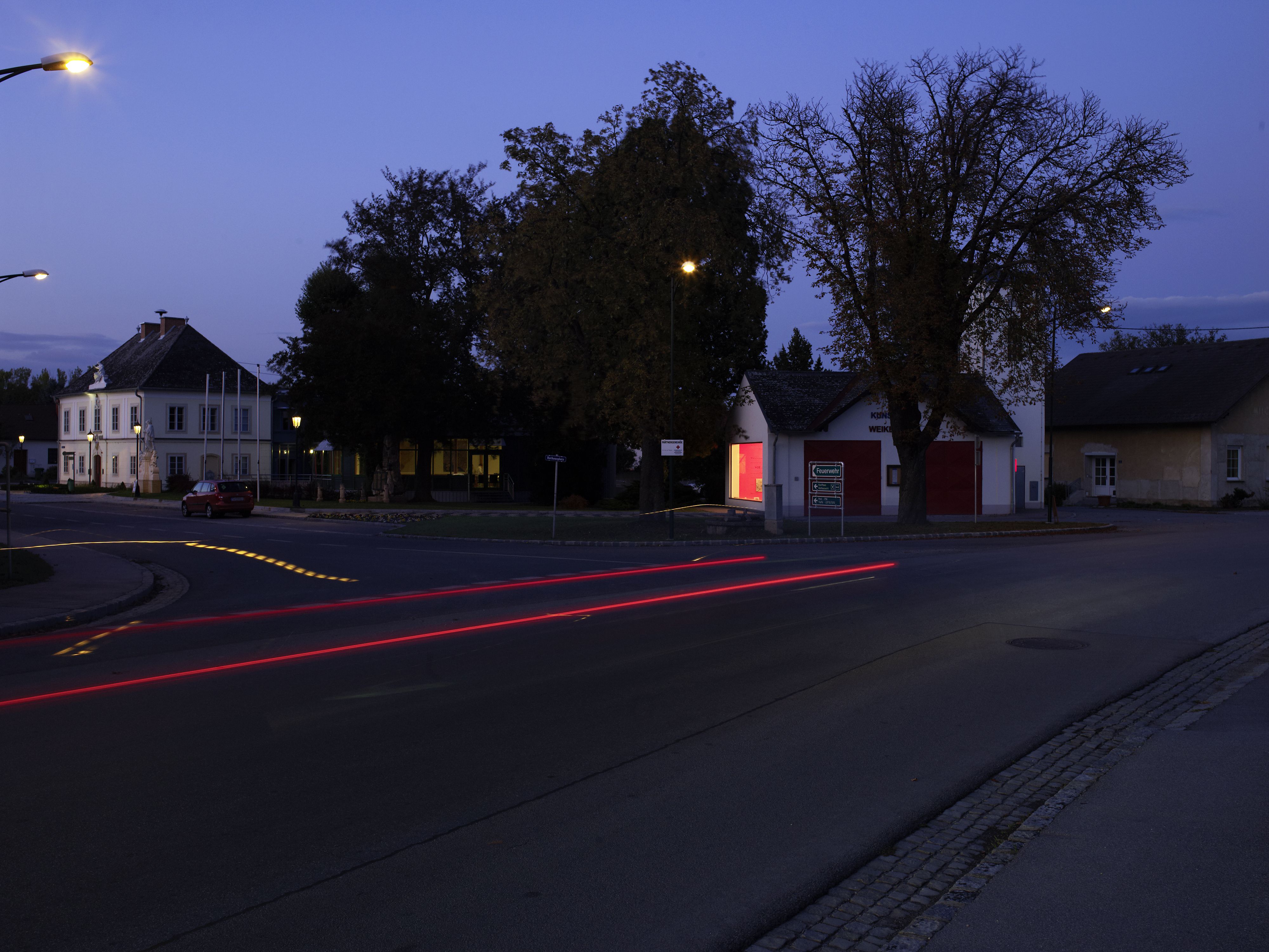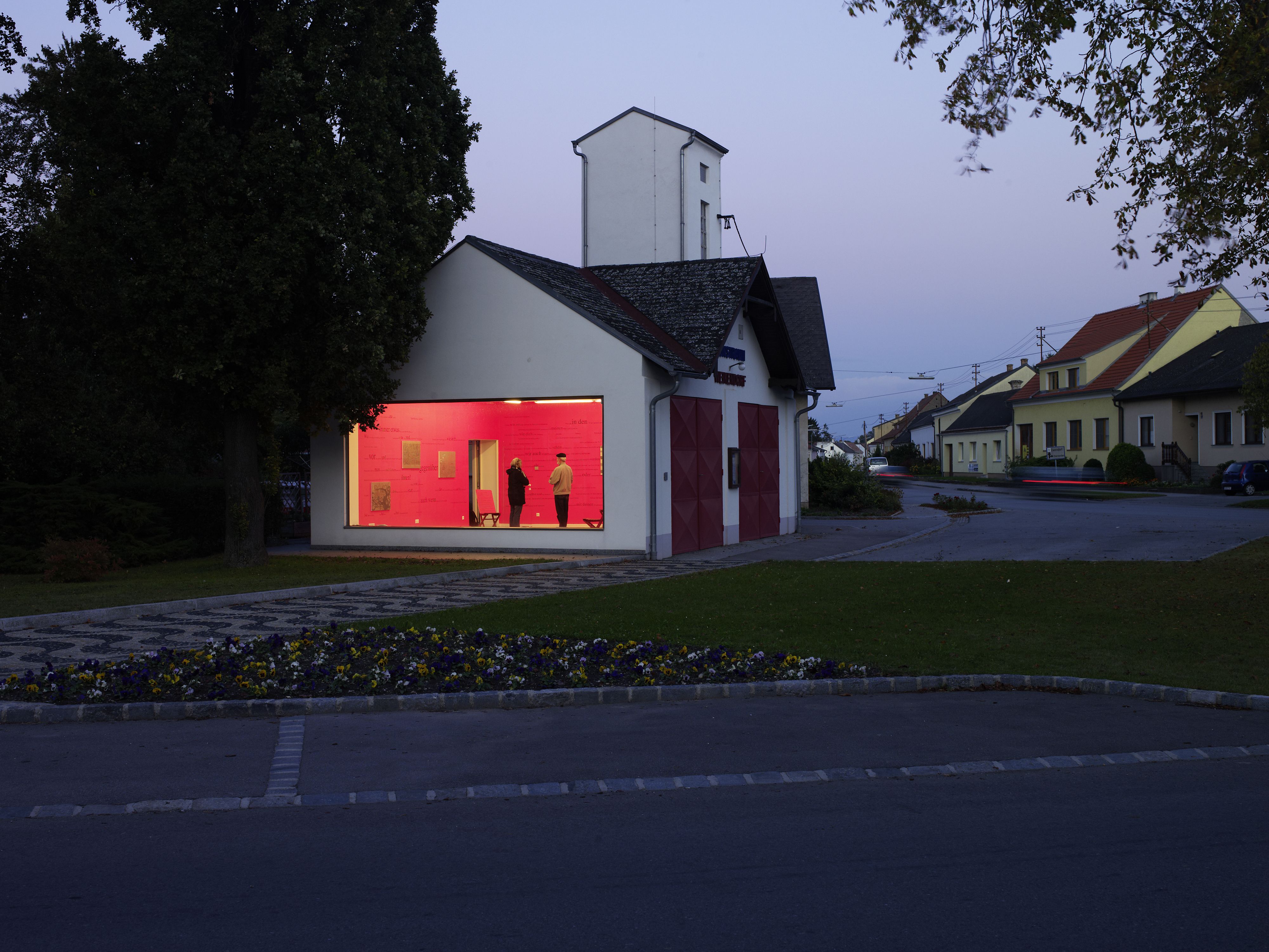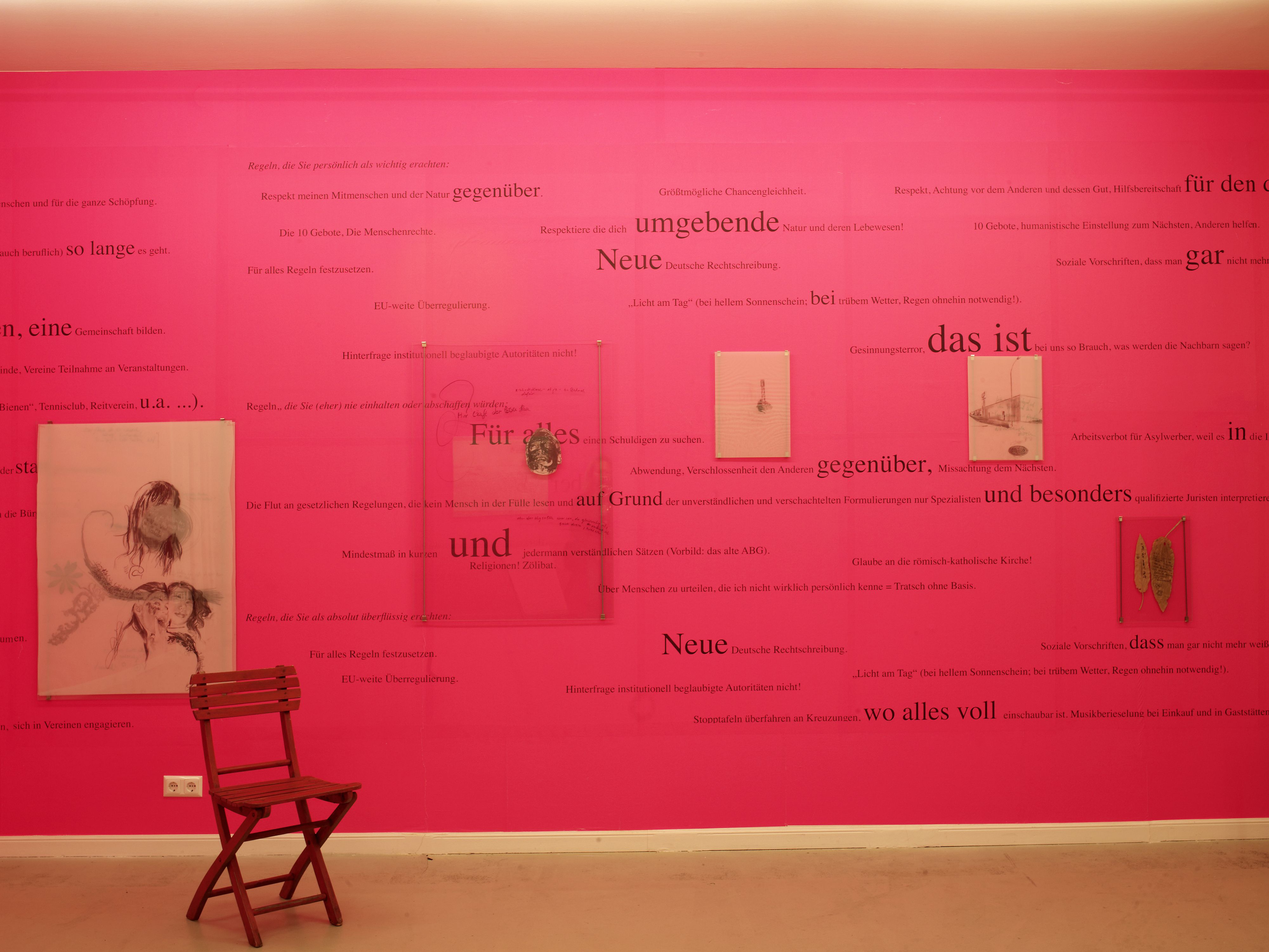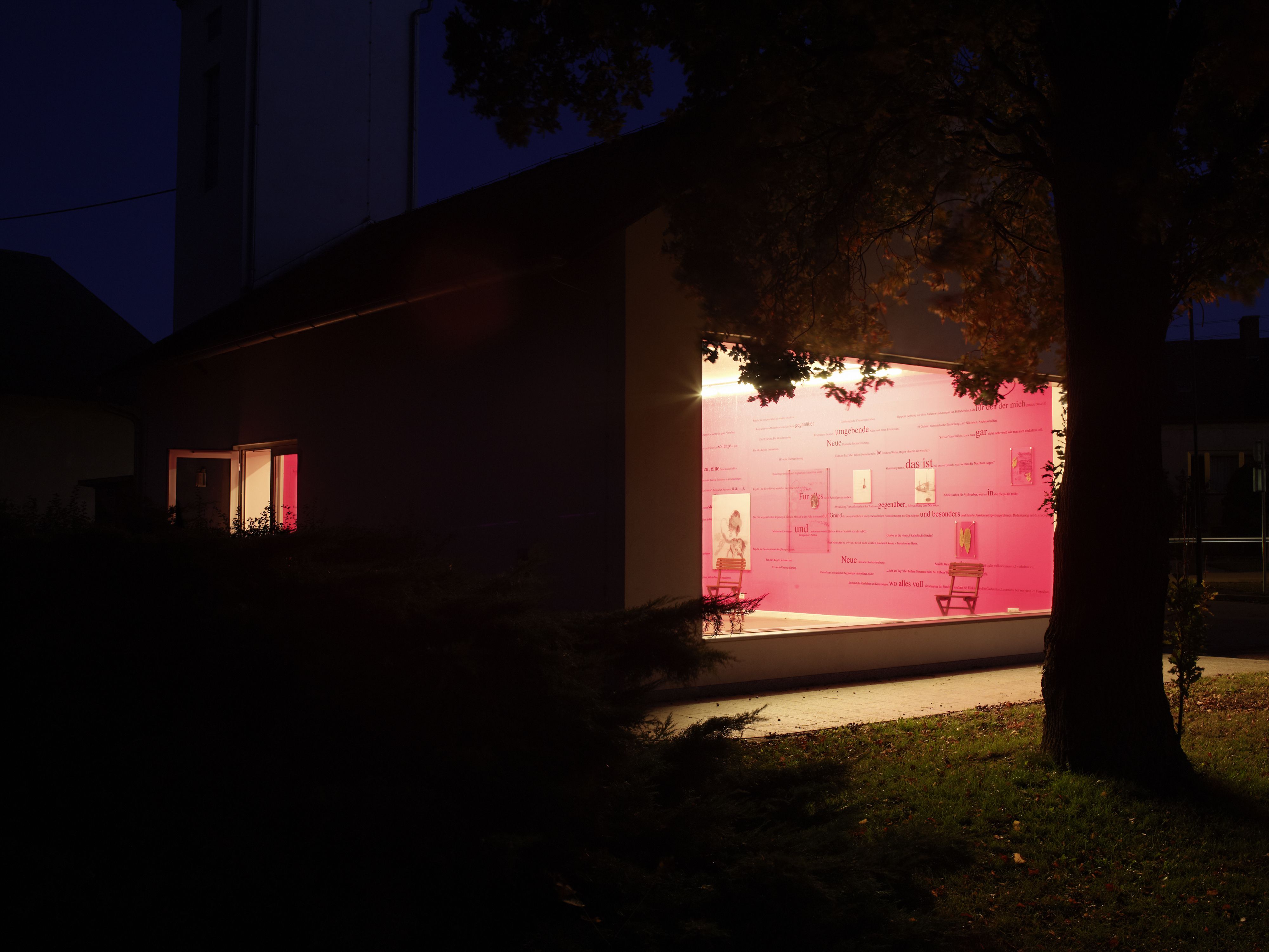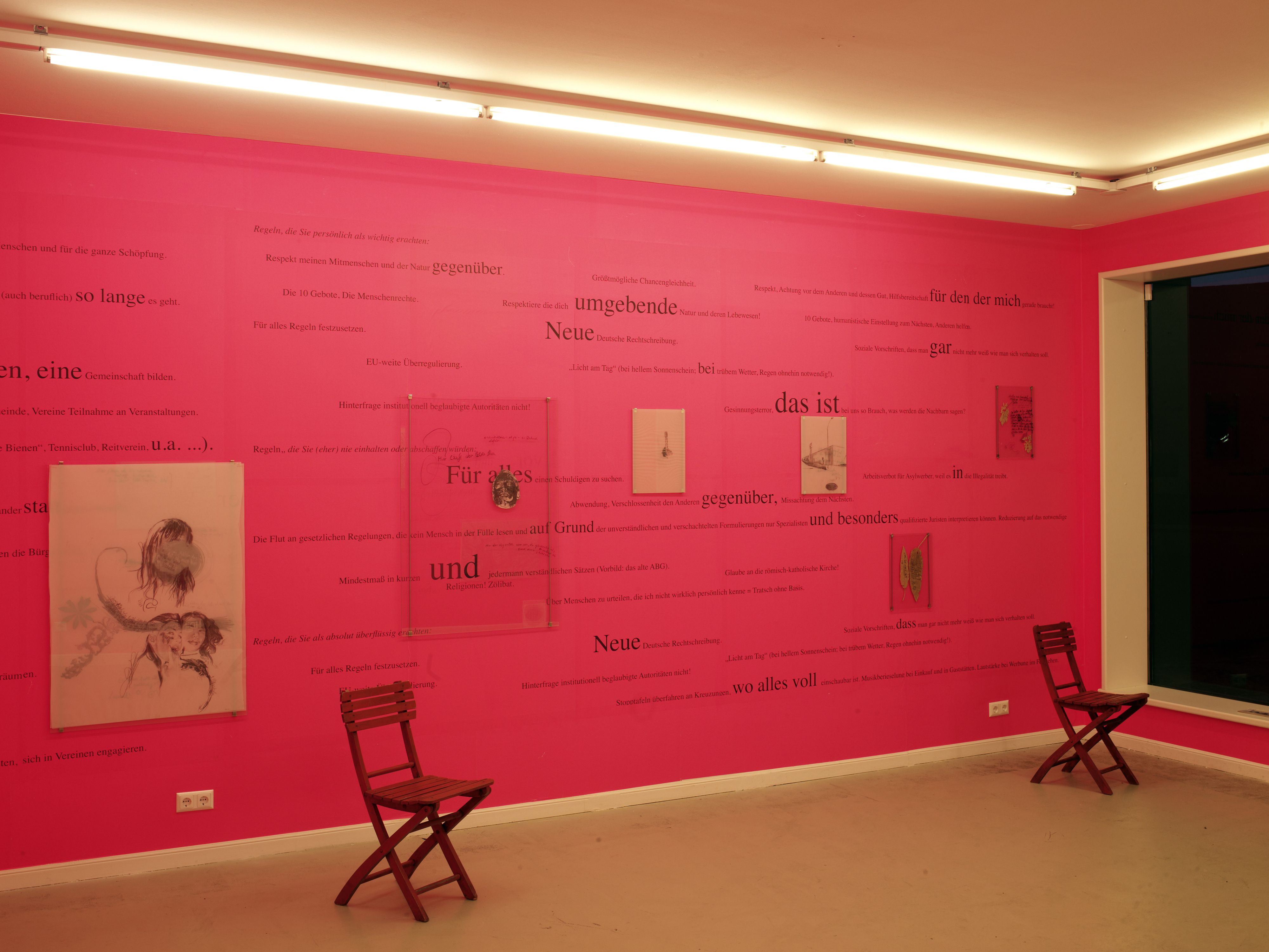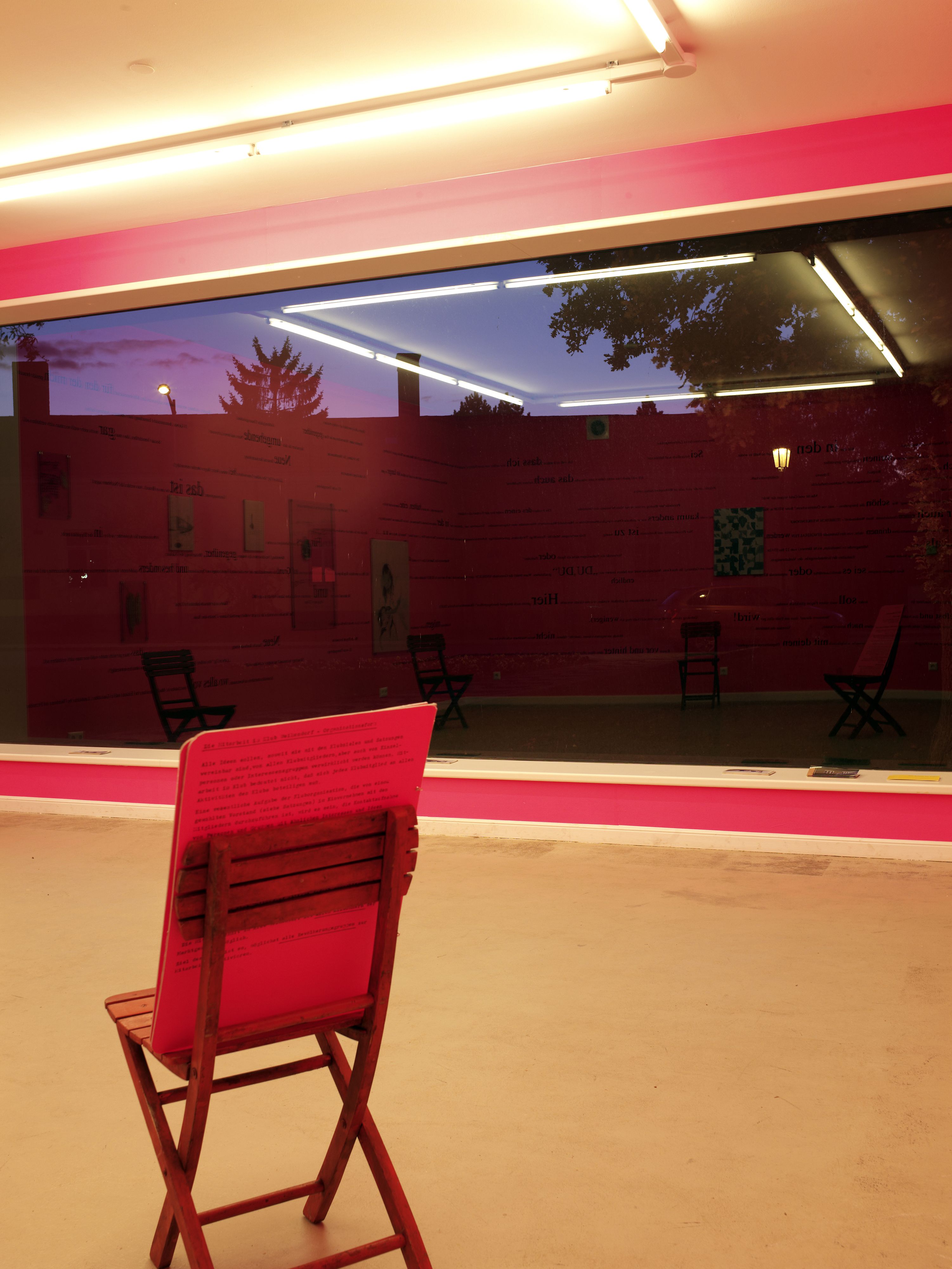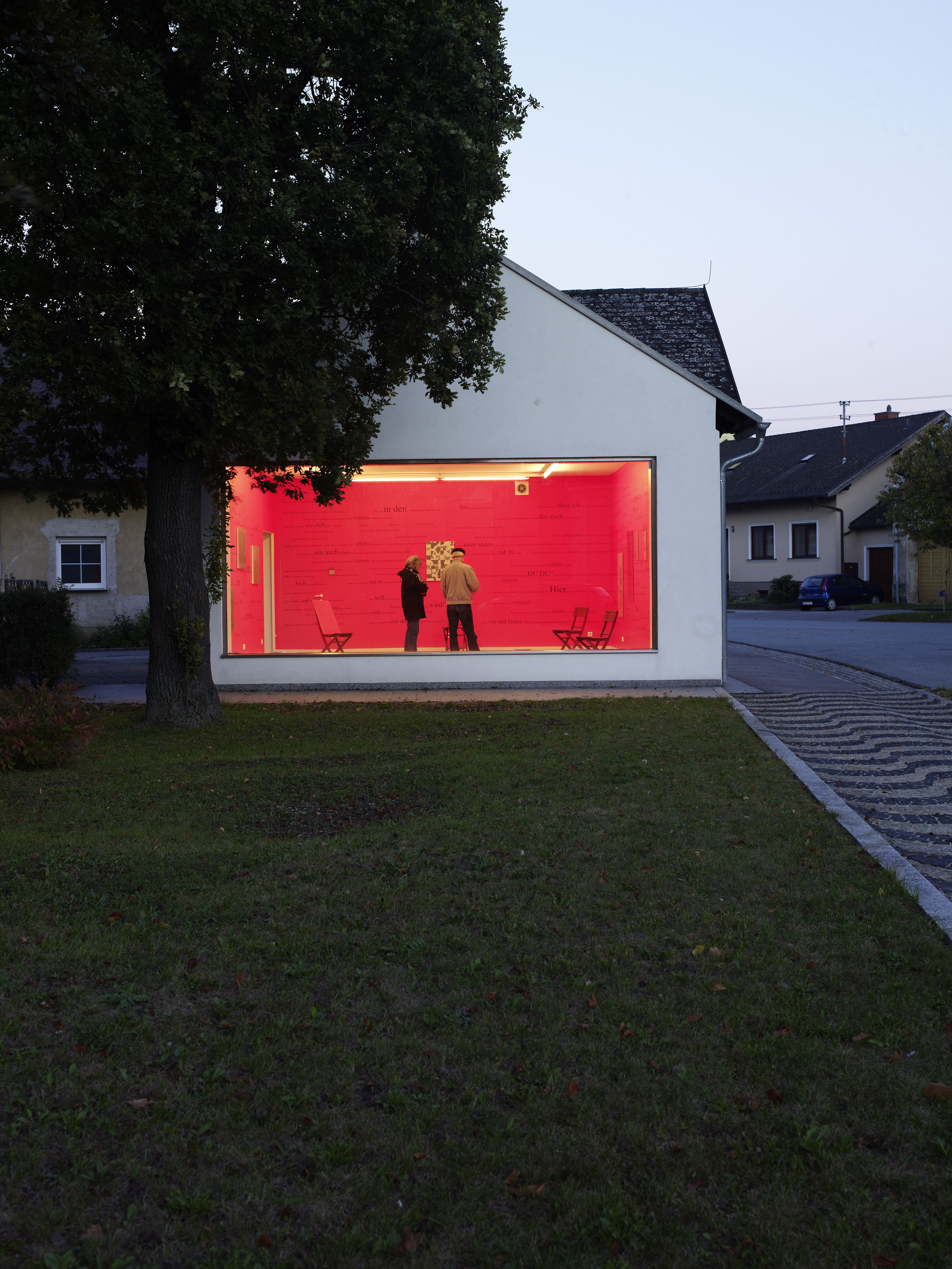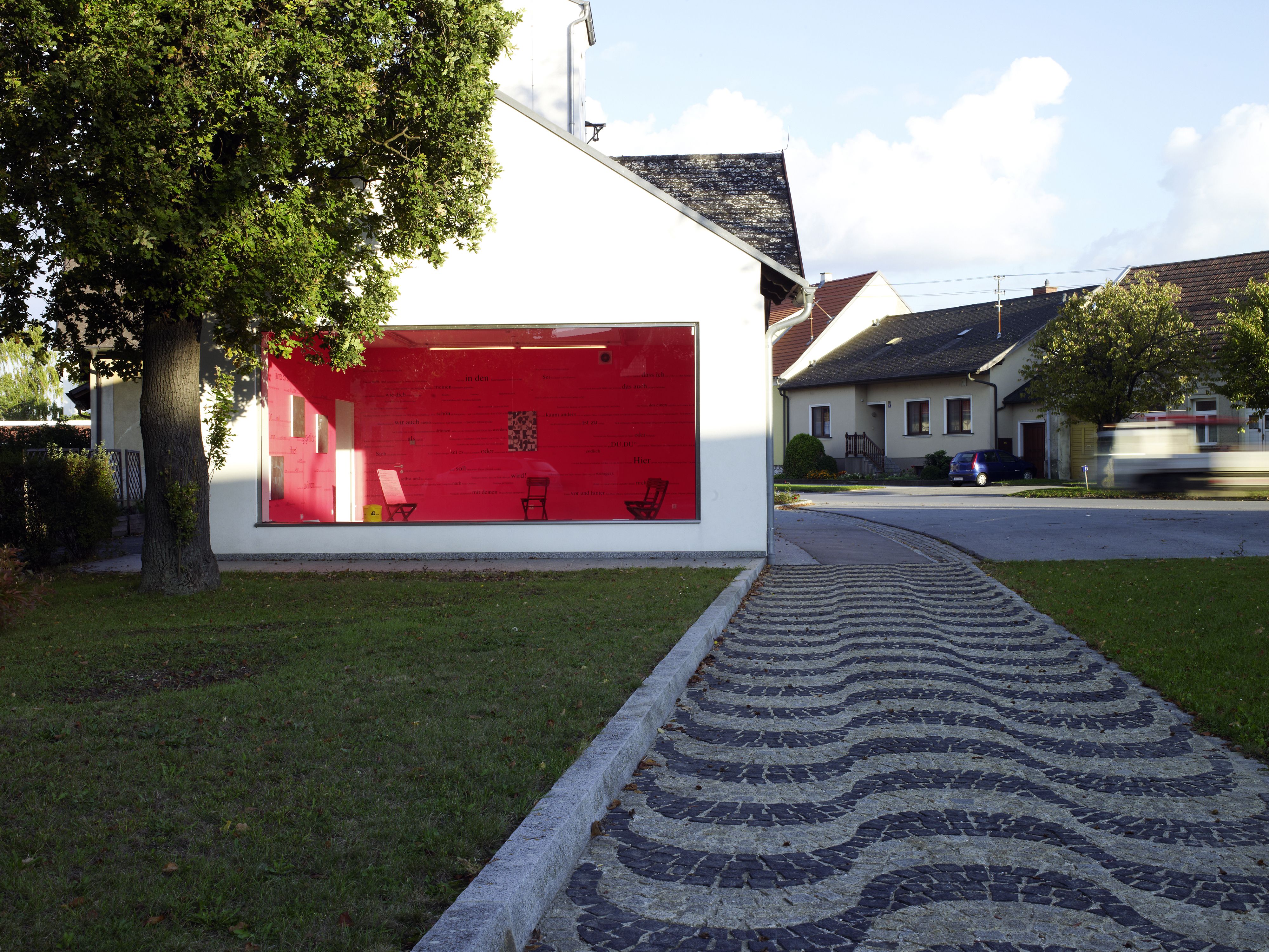Iris Andraschek,
Hubert Lobnig
:
My Life, My Rules — Du Sollst Nicht Rauchen! My Life, My Rules — Du Sollst Nicht Links Parken!
Back
Information
After remodeling an old fire station and turning it into an exhibition space for contemporary art, Michael Kienzer invited artists to create temporary installations that would last half a year and would also be visible from the outside through a large window. He thus transformed the entire building into a sculpture in public space.
Using conversations and research Iris Andraschek and Hubert Lobnig attempted to identify generally applicable and personal rules that govern the social life of a community like that of Weikendorf. What exists in writing and what is unwritten, the outer and the inner, the third-party-determined and one's own, as adopted and self-made rules? What are the rules that the inhabitants of a community follow, what rules do they introduce themselves in times of "tightening the belt" and when "the boat is full"? The raw material for the installation realised at the Kunstraum Weikendorf were lists of the rules of local associations, societies and clubs, the voluntary fire fighters' rules as well as the regulations applying to domestic refuse, drain water, traffic or car parking and building, but also rules derived from Roman law or religion, for example the Ten Commandments, various internet pages and blogs on the rules of life and much more. The exhibition also attempted to explore how the guidelines for the people in a village and the relevant bodies in the local community that prescribe them have formed and changed over their history. Rules were posted on the walls of the Kunstraum Weikendorf, providing a background for drawings and paintings about life in the village, its history and anecdotes from the community. What is special about the Kunstraum Weikendorf is that the exterior presents a rural icon as if this really was a completely normal village fire station, although inside it pursues urban iconography and has similarities to a universal location, the white cube, which is everywhere and nowhere but primarily found in the hearts of major western cities. The panorama window breaks through both meanings, opening the art space to the village setting and cutting a window to the urban space into the façade of the village fire station. The fire station evades any 'normal' function in the village, and for the duration of the exhibition by Andraschek and Lobnig it became an apparently rule-defining body, a gathering place for rules of social interaction and consequently a space where the public can be seen.
(Martina Zadrazil)
Images (10)
